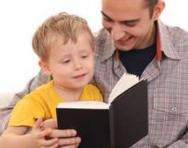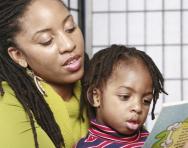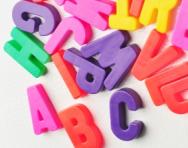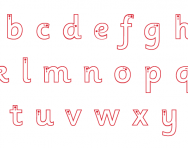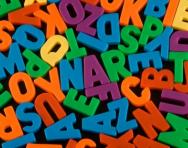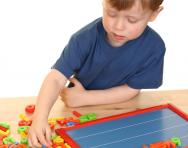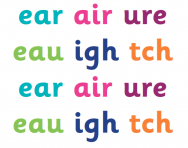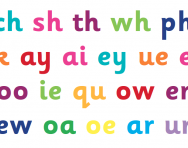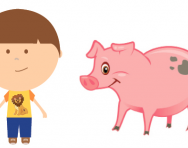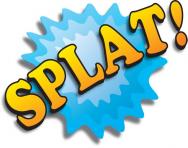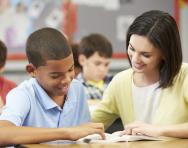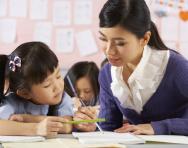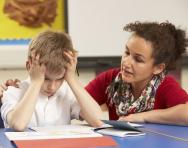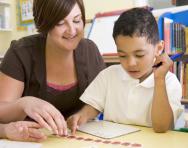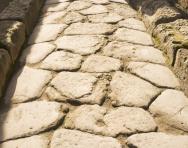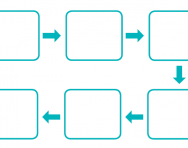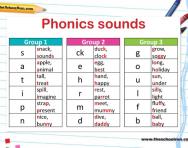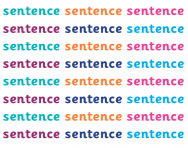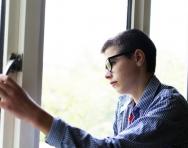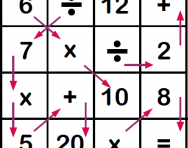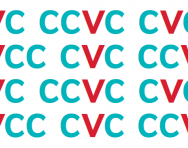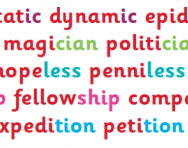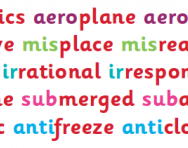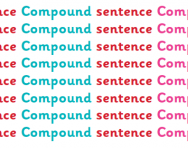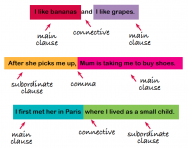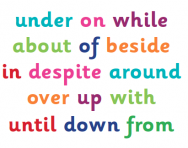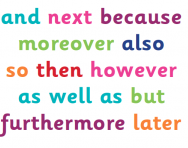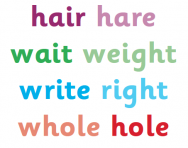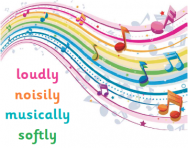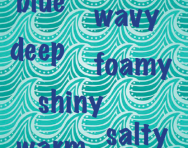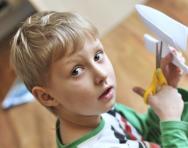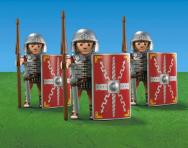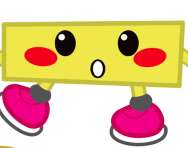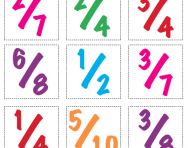Ks1 articles
What is a non-chronological report?
A non-chronological report is a piece of text that isn't written in time order. Find out how your child is taught to read and write non-chronological reports in primary school.
What is brainstorming?
Children learn how to brainstorm in school to generate ideas and solve problems. Find out how teachers encourage children to develop this skill and how it can help improve your child's written work.
What is encoding?
Find out how your child will learn to encode – hear a sound and write it down – and what you can do at home to support learning.
What is decoding?
From the first years of school your child will learn to decode written words and say them aloud. Find out how teachers teach decoding and how you can support learning at home.
What is blending?
As they learn to read, children are taught individual sounds and then how to link them together to form words. By the end of Reception your child will be able to blend sounds together; find out how your child will be taught blending in school and how you can support learning at home.
What is a letter sound?
By the end of EYFS your child should know the sound each letter makes. Find out how your child will be taught letter sounds in school and how you can support learning at home.
What is a grapheme?
Your child will be taught about graphemes as part of their phonics learning journey. We explain what graphemes are and how you can help your child understand the concept at home.
What is a phoneme?
The smallest unit of sound is called a phoneme and your child will be taught about these as part of their phonics learning journey. We explain how the teacher will explain phonemes and how you can help your child when they are starting to put sounds together at home.
What is a consonant cluster?
When two consonants appear next to each other it is called a consonant cluster. We explain how teachers explain consonant clusters to children and how you can help your child spot them when you are practising reading at home.
What is a trigraph?
Your child will be taught about trigraphs as part of their phonics learning journey. We explain how teachers explain trigraphs to children and how you can reinforce learning at home.
What is a digraph?
Your child will be taught about digraphs as part of their phonics learning journey. We explain how teachers explain the concept to children and how you can help your child spot digraphs at home.
What is a metaphor?
A metaphor is a figure of speech where two things that are normally unrelated are compared to each other. Find out how teachers explain metaphors to school children and how to encourage your child to spot metaphors and use them to improve their writing.
What is onomatopoeia?
Onomatopoeia is a word that names a sound, but also sounds like that sound. Find out how teachers explain onomatopoeia to school children and how to encourage your child to use it to improve their writing.
What is guided reading?
A guided reading session takes place every day in school. We explain what happens during these sessions and how you can help your child develop the skills of decoding and comprehension at home.
Teachers’ tips for reading comprehension
Reading comprehension exercises are a staple homework activity, not to mention a significant part of SATs. Lucy Dimbylow asked teachers for their insider tips on getting to grips with comprehension and how to help your child at home.
How to work with your child’s SENCO
Having a healthy working relationship with your child’s SENCO can help ensure they get the support they need. Here’s how to ensure you make a good team. By Lucy Dimbylow
How a SENCO could help your child
If your child has a special educational need, the school’s SENCO is likely to play a big part in his day-to-day life and learning. Lucy Dimbylow highlights nine ways in which she can help make your child’s school journey easier.
4 ways to travel back to Roman London
Travel back in time 2,000 years and enter Londinium, a Roman city which stood where the capital does today. Bring the Roman empire to life without leaving the UK (and for free!) with a walk round Roman London, from Londinium's amphitheatre to the remains of the Roman Wall. Francesca Fenn of Step Outside Guides offers a few ideas for a Roman discovery day for KS1 and KS2 children.
What is a story map or story mountain?
Your child will be taught to use different planning and analysis tools in primary literacy. Story maps, story flowcharts and story mountains are diagrams to help them think clearly about the plot and structure of what they're writing. We explain what parents need to know.
What is phonics?
Sort your phonemes from your graphemes, decoding from encoding and digraphs from trigraphs with our parents' guide to phonics teaching. Our step-by-step explanation takes you through the different stages of phonics learning, what your child will be expected to learn and the vocabulary you need to know.
What is sentence level work?
Sentence level work is everything your child will be taught about grammar, text content and punctuation in the primary-school classroom. We offer some examples of activities to help them practise and improve their writing at home.
7 common school life problems solved
Every parent wants their child to be happy at school, but what if there’s a problem? Here’s our step-by-step guide to tackling and resolving some of the common issues that might crop up in primary school.
12 great benefits of maths challenges
Maths activities could give your child’s learning a boost in many ways, and help them engage with numbers (and enjoy it!) from a young age. Lucy Dimbylow offers 12 reasons to give number puzzles a go today.
What are CVC words, CCVC words and CVCC words?
Phonics teaching introduces children to CVC words (consonant vowel consonant), then CCVC words (consonant consonant vowel consonant) and CVCC words (consonant vowel consonant consonant). Understand how teachers will present the different words in the classroom and how to support your child's learning at home in our parents' guide to decoding and blending sounds.
What is a suffix?
Suffixes are word endings. Children learn suffixes and how to use them to help them improve their spelling and understand of nouns, verbs, adjectives and adverbs. Find out more about how to help your child with KS1 and KS2 spelling and the use of suffixes in our guide.
What is a prefix?
Prefixes are groups of letters added to the beginning of a word, changing its meaning. Learning prefixes helps children with their spelling and vocabulary; we explain everything primary-school parents need to know about prefixes and spelling in KS1 and KS2.
What are simple, compound and complex sentences?
Simple sentences, compound sentences, complex sentences... can you identify the different types of sentence construction your child will learn in KS1 and KS2? Our parent-friendly guide sorts out any confusion and explains how your child will be taught to put grammar into practice in the classroom.
What is a clause?
From Year 1 onwards children are taught to write sentences made up of two clauses as part of sentence-level literacy work in the classroom. We explain everything you need to know about main and subordinate clauses in parent-friendly language.
What are prepositions?
Prepositions are some of the most common words in the English language. We explain how your child will learn to use them in primary school and why time connectives are so important in non-fiction writing.
What are connectives?
Has your child mentioned connectives? Connectives are joining words, and children will be taught to use them to connect phrases together into longer sentences and improve the flow of their writing. We explain what you need to know to help your child with sentence composition at home.
What is a homophone?
Homophones are tricky words which sound the same but have different meanings and are sometimes spelled differently (there, their and they're, for example). We explain how your child will be introduced to homophones in the classroom and tricks you can try at home to help them master homophone spelling.
What is an adverb?
Adverbs give us more information about a verb, explaining how, when, where or why an action is taking place. We explain how children are taught to use adverbs to improve their writing in KS2, and how you can help at home.
What is an adjective?
Adjectives describe nouns, but how will your child be taught to use them correctly? We explain how word banks and a thesaurus can help improve your child's writing by encouraging them to use effective, powerful adjectives in their work.
5 at-home design and technology projects for primary children
Design and technology is part of the national curriculum. Teacher and parent Phoebe Doyle offers some practical D&T project ideas and suggestions to help your child get hands-on, boost their confidence and have fun (and make mess!) with materials at home.
5 primary school art projects to try at home
Art is part of the national curriculum and one of the subjects your child will be taught at school. Teacher and parent Phoebe Doyle offers some practical project ideas and suggestions to help expand their knowledge and experience at home.
Teachers' tricks for multiplication
Can you multiply using the grid method, or draw a multiplication calculation as arrays? Find out more about multiplication and how it’s taught in schools today with our teachers' tips, tricks and methods, explained for primary-school parents.
12 of the best ways to get kids excited about history
We’re surrounded by history and heritage, and these books, games, toys and apps will make it come to life for children (and adults!) of all ages. Cook a Tudor treat, visit a virtual Roman London or read the diary of a war nurse – each activity is packed with information and details that create a real sense of being in the past. Start a life-long love of history and its treasures today!
Teachers' tricks for subtraction
Help your child become subtraction savvy with our teachers' tips on methods, practical resources, vocabulary and more. From subtraction songs and subtraction story problems to column subtraction, Phoebe Doyle offers some practical homework help for 'taking away'.
Teachers' tricks for fractions
From halves in quarters in KS1 to equivalent fractions in KS2, primary teacher Phoebe Doyle offers some insiders’ tips to help you help your child at home, plus details of fraction walls, hundred charts and other useful maths resources.
Encourage a love of drama and the stage
Whether your child is a diva in the making or more inclined to be backstage crew, drama and acting could help develop skills that will offer a boost in many areas of life, says Lucy Dimbylow.



